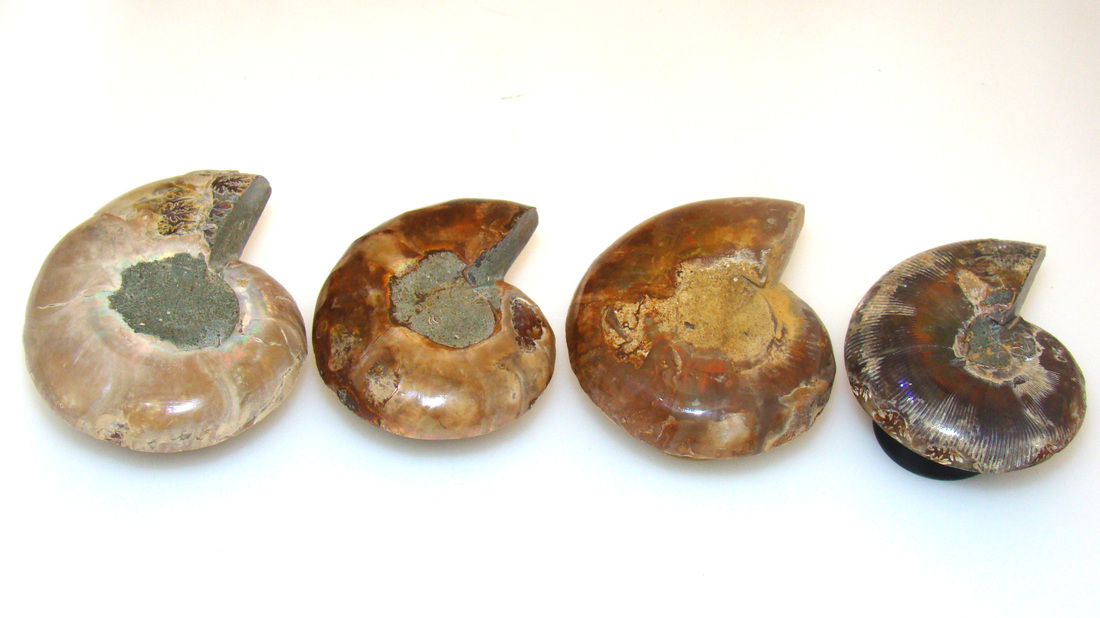

Thus ammonites themselves can make beautiful and interesting pieces of jewellery.īut it is the ammolite that is the most desired and collectable form of these ancient creatures. The result is a pseudomorph of the original shell shape, which may contain beautiful cavities of crystalline material throughout the shell‘s structure.

Green and red are the most common colours, with blue and violet being rarer, and therefore more valuable" "The pattern, intensity and range of colour all contribute to the overall value of an ammolite gem. The ammonites that form ammolite specifically inhabited a prehistoric inland subtropical sea that bordered the Rocky Mountains of northwest America.Īs the sea receded, layers of sediment preserved the shells.Īmmonite shells comprise a number of minerals including small aragonite platelets, and depending on the conditions of deposition, these are often replaced by pyrite or calcite. The resulting organic gem – which resembles an opal in some ways – is beautifully coloured, with a wonderful iridescent sheen.

They thrived in tropical seas during the Devonian geological period, beginning about 400 million years ago, to the close of the Cretaceous period 66 million years ago.Īmmolite forms when the fossilised shell of the ammonite is preserved and the cavities that originally held its soft body are filled with aragonite – the same mineral that is responsible for the nacre of pearl oyster shells. The process begins with ammonites, marine invertebrate animals that are now extinct. Little did the creatures of our planet know, they would not only be a stepping-stone in the evolution of life, but also provide the humans of the future with fabulous jewellery gems in the form of ammolite. Hundreds of millions of years ago, the Earth was very different.


 0 kommentar(er)
0 kommentar(er)
